-
Title (Dublin Core)
-
Dynamiters to the attack
-
Article Title and/or Image Caption (Dublin Core)
-
Title: Dynamiters to the attack
-
extracted text (Extract Text)
-
WHEN the tales of this war come to be
a the man with a satchel full of
TNT will rank with the most dashing and
intrepid of all its heroes. Whether he be
parachutist, commando, or assault pioneer
from the Corps of Engineers, he will be
operating as a lone wolf or with a small
squad of teammates; but there will be con-
centrated in him a tremendous share of the
responsibility for success against the enemy.
“Demolition” is what the Army engineers
call the old art of the dynamiter—the use
of high explosives not in bombardment or
artillery fire, but in charges placed by hand,
right where they will do the most damage.
One man with a few half-pound blocks of
TNT (looking much like a bundle of over-
size Eskimo pies) can raise more havoc, if
he reaches the right spot, than a load of
big bombs dropped in the vicinity.
‘The elements of demolition are part of the
basic training of military engineers, and the
subject covers the whole field of laying land
mines, blowing craters to impede tanks, the
wrecking of bridges, docks, and factories,
and the reduction of fortified positions by
direct personal assault.
Up to now, fighting a defensive war, we
have had demolition much in mind as part
of the scorched-earth tactics of armies in
retreat. The competent destruc-
tion of the oil wells and refineries
of Tarakan and Balik-Papan, and
the failure of such destruction at
the bases of Penang and Singa-
pore, will have deep and long-
range effects on our fight in the
Pacific. The progress of enemy
tanks has often been held up by
the blowing of wide, deep, steep-
sided craters in the narrow road-
ways of hill country.
But demolition is an even
greater offensive weapon. When
parachute troops drop behind the
enemy lines, their mission may be
to capture an airport. But they may be used just
as well for breaking up enemy communications,
wrecking bridges and railroads, preventing the ad-
vance of reinforcements. Such also is the work of
the black-uniformed, cork-faced British commandos
‘who slip ashore on the coast of oc-
cupied France to blow up ammuni-
tion dumps and otherwise harry
the Nazis and obstruct their operations.
The apparent miracle of the German ad-
vance in 1940 against supposedly impregna-
ble fortifications was largely the work of
men with bundles of explosive, who stormed
the pillboxes to lay their charges. They
were organized in combat teams of squads
and platoons, each rehearsed for a specific
task. Practically every pillbox has its blind
side, supposedly protected by guns of an-
other pillbox. While the protectors were
screened by smoke bombs, the demolition
man would slip up to the pillbox on its blind
side and place his explosive. Often this sort
of job is done with a satchel charge, a
bundle of explosive suspended from a string,
hung on the end of a stick. With this simple
equipment the attacker could whip his ex-
plosive around the side, or over the top of
the pillbox, and set it off at the most vulner-
able spot while remaining protected.
‘The war of movement has opened the field
for the guerilla, commando type of tactics.
Tanks on the march may be well-nigh irre-
sistible, but in bivouac they are vulnerable to
bush-fighters who creep
up and attack with bombs
in the dark. What the
American Army is developing in the way of
assault troops and assault tactics is some-
thing the enemy may be expected to find
out for himself, preferably by surprise.
But when the time for the attack comes,
don’t forget the boys with the satchels.
Down at Fort Belvoir, Va., little more
than a stone’s throw from Mount Vernon,
are the Engineer School and Replacement
Center, where thousands of new soldiers
are learning the art of dynamiting. In their
training they actually use dynamite, and
also nitrostarch, so as to save the more
scarce TNT for actual warfare.
TNT (trinitrotoluene) is the standard
explosive for the U. S. Army in the field. It
is a light-yellow crystal, one ingredient
of which is toluene, a liquid now made as
a by-product in the refining of kerosene,
though some comes from the manufacture
of illuminating gas. It is put up in half-
pound blocks, 1 3/4 inches square by 3 1/4
inches long, in cardboard cartons with tin
ends. There is a hole in the end of the
block for introduction of the cap. If the
hole is not large enough for the detonating
agent at hand, the explosive man has a drill
like an auger to dig out a larger hole.
One of TNT's great values is that it is
insensitive. It can be kicked around roughly
without detonating, and small quantities of
it can be burned without explosion. A high-
explosive detonator is needed to set it off.
This is usually a cap made of tetryl, and
the tetryl in turn is exploded by a small
quantity of fulminate of mercury mixed
with potassium chlorate. This mixture is
very sensitive and can be set off either by
electricity or by a burning fuse.
Ordinarily charges are set off by elec-
trical wiring and a small magneto known as
a blasting machine. But for quick jobs,
especially when it is desired to set off a
number of charges simultaneously, the Army
uses detonating cord, commercially known
as primacord. This is a flexible, waterproof
fabric tube, about 1/5 inch in diameter
(yellow with a rough surface for easy
identification) which is filled with a high-
explosive core—a white crystalline sub-
stance known as pentaerythritetetranitrate.
An explosion travels along this cord at the
rate of 19,700 feet a second, and it is a vio-
lent explosion sufficient to set off any TNT
in contact with it. It is especially useful in
obtaining the simultaneous explosion of a
whole mine field.
The detonating cord is also useful in mak-
ing the implement of assault known as a
bangalore torpedo, developed in the first
‘World War for cutting barbed wire. Blocks
of TNT with holes bored in them are strung
on the detonating cord like a necklace
20 feet long. This in turn is inserted in
a long iron pipe.
The bangalore torpedo is used to
open up a gap in a barbed-wire entan-
glement so that troops may rush
through. It is slipped under the wire,
close to the pickets to which the wire is
attached, and exploded by a fuse which
gives the dynamiter a chance to get
away to a shell hole or other shelter.
In exploding, the fragments of pipe cut
the wire like knives, and sweep the
barbed-wire entanglement clean for 20
feet or more.
All kinds of mining comes into the
work of the engineers, but this war has
developed a new kind—the trap mine, |
or booby trap. The Axis started it,
leaving all sorts of fiendish practical
jokes behind them in territory from
Which they have retired. If you found |
a bright new fountain pen lying on the
Libyan Desert, you wouldn't dare to |
pick it up. It probably would be at-
tached to the trigger of a mine, which |
would blow you to bits.
The effectiveness of booby-trap mines |
against an army of occupation lies in
their not conforming to any pattern.
In their training lesson on booby traps,
the soldiers have issued to them a mot-
ley collection of ordinary mouse traps,
spring clothespins, flashlight batteries, |
nails, and rubber bands, together with a |
supply of low-power caps to set off fire-
crackers. From then on it is up to them
to improvise strange Rube Goldberg in- |
ventions to entrap the enemy.
-
Contributor (Dublin Core)
-
Hickman Powell (article writer)
-
Language (Dublin Core)
-
Eng
-
Date Issued (Dublin Core)
-
1942-06
-
pages (Bibliographic Ontology)
-
44-49
-
Rights (Dublin Core)
-
Public domain
-
Archived by (Dublin Core)
-
Sami Akbiyik
 Popular Science Monthly, v. 140, n. 6, 1942
Popular Science Monthly, v. 140, n. 6, 1942
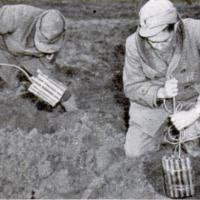 Screenshot_1.png
Screenshot_1.png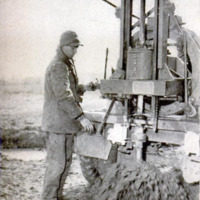 Screenshot_2.png
Screenshot_2.png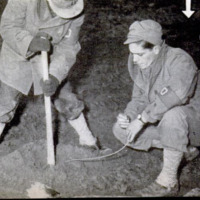 Screenshot_3.png
Screenshot_3.png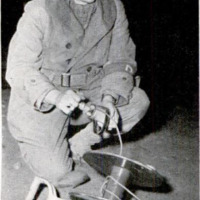 Screenshot_4.png
Screenshot_4.png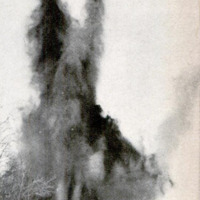 Screenshot_5.png
Screenshot_5.png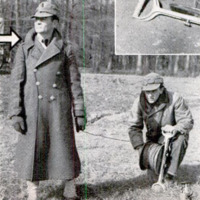 Screenshot_6.png
Screenshot_6.png Screenshot_7.png
Screenshot_7.png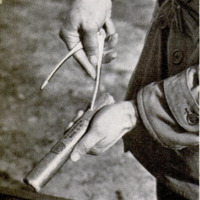 Screenshot_8.png
Screenshot_8.png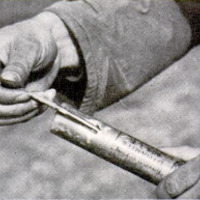 Screenshot_9.png
Screenshot_9.png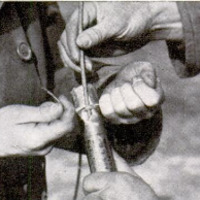 Screenshot_10.png
Screenshot_10.png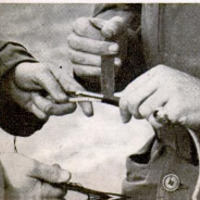 Screenshot_11.png
Screenshot_11.png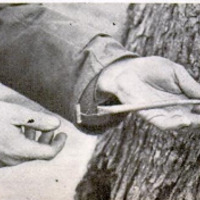 Screenshot_12.png
Screenshot_12.png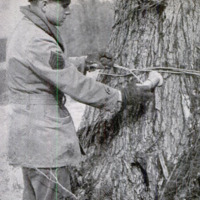 Screenshot_13.png
Screenshot_13.png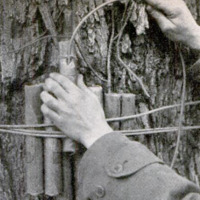 Screenshot_14.png
Screenshot_14.png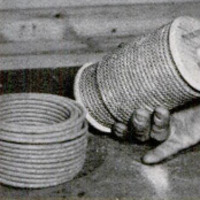 Screenshot_15.png
Screenshot_15.png Screenshot_16.png
Screenshot_16.png Screenshot_17.png
Screenshot_17.png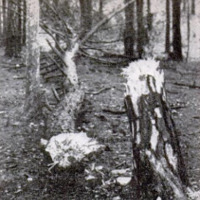 Screenshot_18.png
Screenshot_18.png Screenshot_19.png
Screenshot_19.png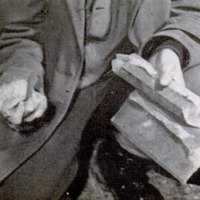 Screenshot_20.png
Screenshot_20.png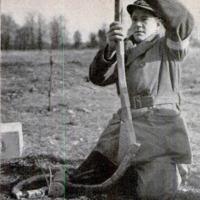 Screenshot_21.png
Screenshot_21.png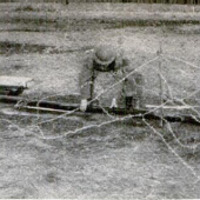 Screenshot_22.png
Screenshot_22.png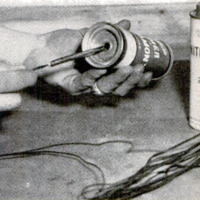 Screenshot_23.png
Screenshot_23.png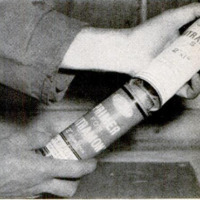 Screenshot_24.png
Screenshot_24.png























